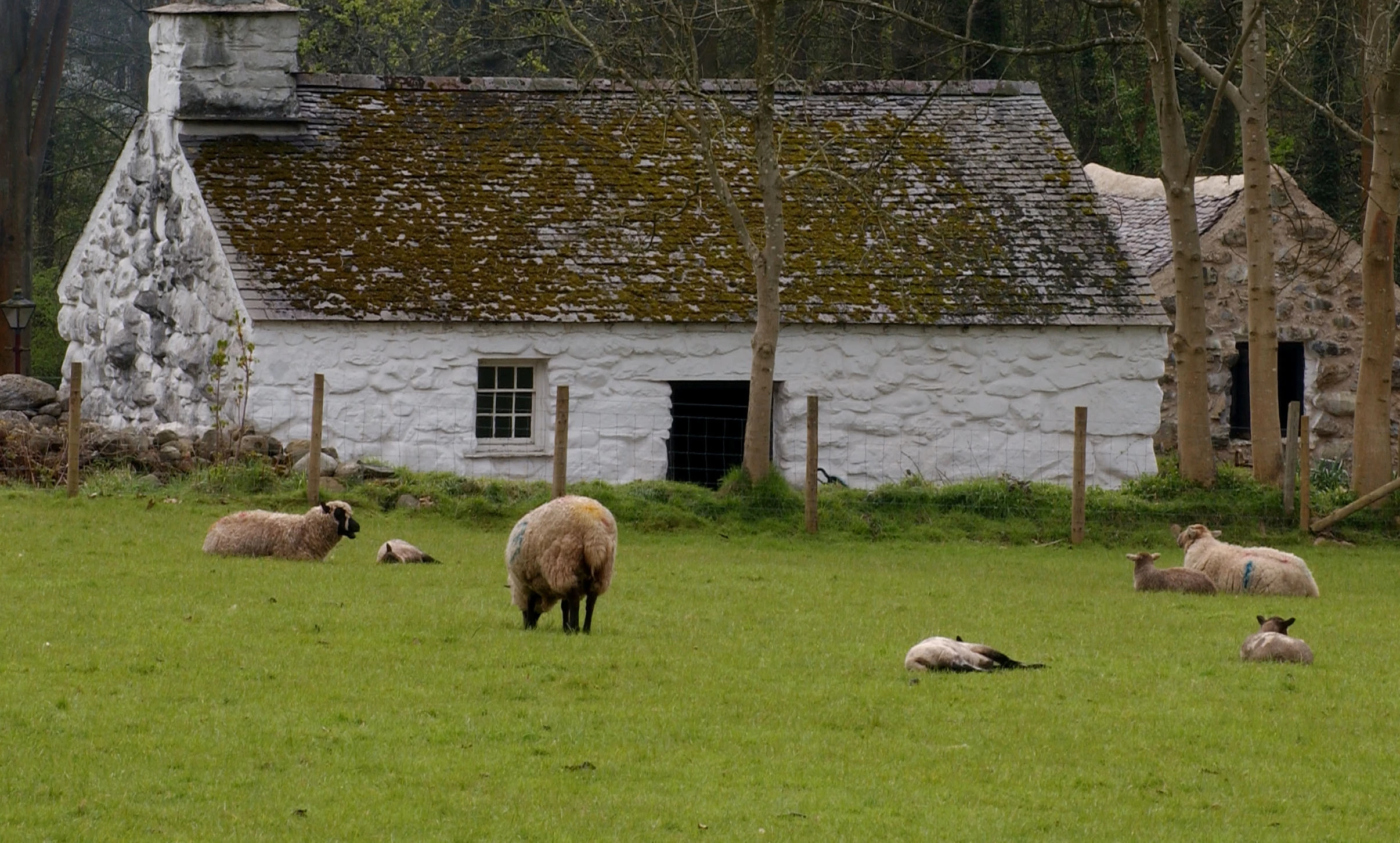Lambing During Climate Change: What are the Challenges at St Fagans?
, 20 March 2024
On a wide scale, climate change has made us all aware of just how unpredictable the weather year-to-year can be. But how has it affected lambing at St Fagans and farming in Wales as a whole? Speaking with Emma from the St Fagans farming team, I learnt how climate change has impacted Lambcam 2024.
In good news, this year has been easier in comparison to 2023! This is down to increased rainfall over the summer in comparison to 2022 which meant that there has been an ample amount of grass to feed the sheep. The year prior had been the opposite, according to Met office data the rainfall in Cardiff in July 2022 had been just 13.0mm, whereas 2023 saw a staggering increase to 185.6mm. A dry summer means that the farm has to rely more on hay and reserve feed over natural grass, leading to the ewes being in poor body condition and subsequently lower birth rates. Ewes require constant monitoring in both the lead up to and during pregnancy. having high mineral and vitamin levels is essential in ensuring they have high fertility and conception rates when being sent to the rams. Meeting their nutritional needs can also ensure that they are not using any of their reserve energy in the peak of their pregnancy. In 2023 we saw 342 lambs born, and this year 444 lambs have been born so far (up to 19 March). This includes a significantly higher number of triplets than average, as well as one set of quadruplets!
So, is more rain always a good thing? Yes and no, both wet and dry scenarios bring their own unique challenges. Too much rain results in the ground becoming waterlogged, making the grass less likely to grow well. The farm at St Fagans in particular is on a lower ground level, so rainfall is slower to dry. Ewes can end up developing footrot in poor underfoot conditions, who then won’t want to eat, ending up weaker on their legs and potentially not able to conceive during mating.
As you may have noticed, lambing is very high maintenance! Even a slight change can impact how lambing is carried out each year, so farmers are already prepared for the bigger changes. In the words of Emma: “you just have to be”. Farmers have always had to be in touch with how the land is changing, and freak weather years, while becoming more common, have always been an occurrence. In short, being prepared for every eventuality has always been part of the job. While the factors always change, the team at St Fagans have the inherent farmer’s attitude to keep going.
On the other hand, livestock are temperamental in nature. The dryness of 2022 led to some of the rams going infertile which could be sensed by the ewes, prolonging the lambing season. The lambs of course are vulnerable too, food shortages during drought impacting their growth rates or the mother’s capability of caring for her lambs, in some cases prioritising their milk and leaving out one of her lambs. The general mood of sheep can decline, they get just as fed up with all the rain as we do! Last summer during periods of constant rainfall, they’d refuse to leave the shed even when the doors were open.
All in all, we know that the world is ever changing, but so is lambing. It’s always been up to farmers to adapt and make the most of what they’ve got. Thank you so much to Emma for taking the time to talk with me, we hope you have enjoyed watching Lambcam 2024!
By Lowri Couzens, Amgueddfa Cymru Producer
Does Lambcam have you bleating with joy? Shear the love and donate today!

